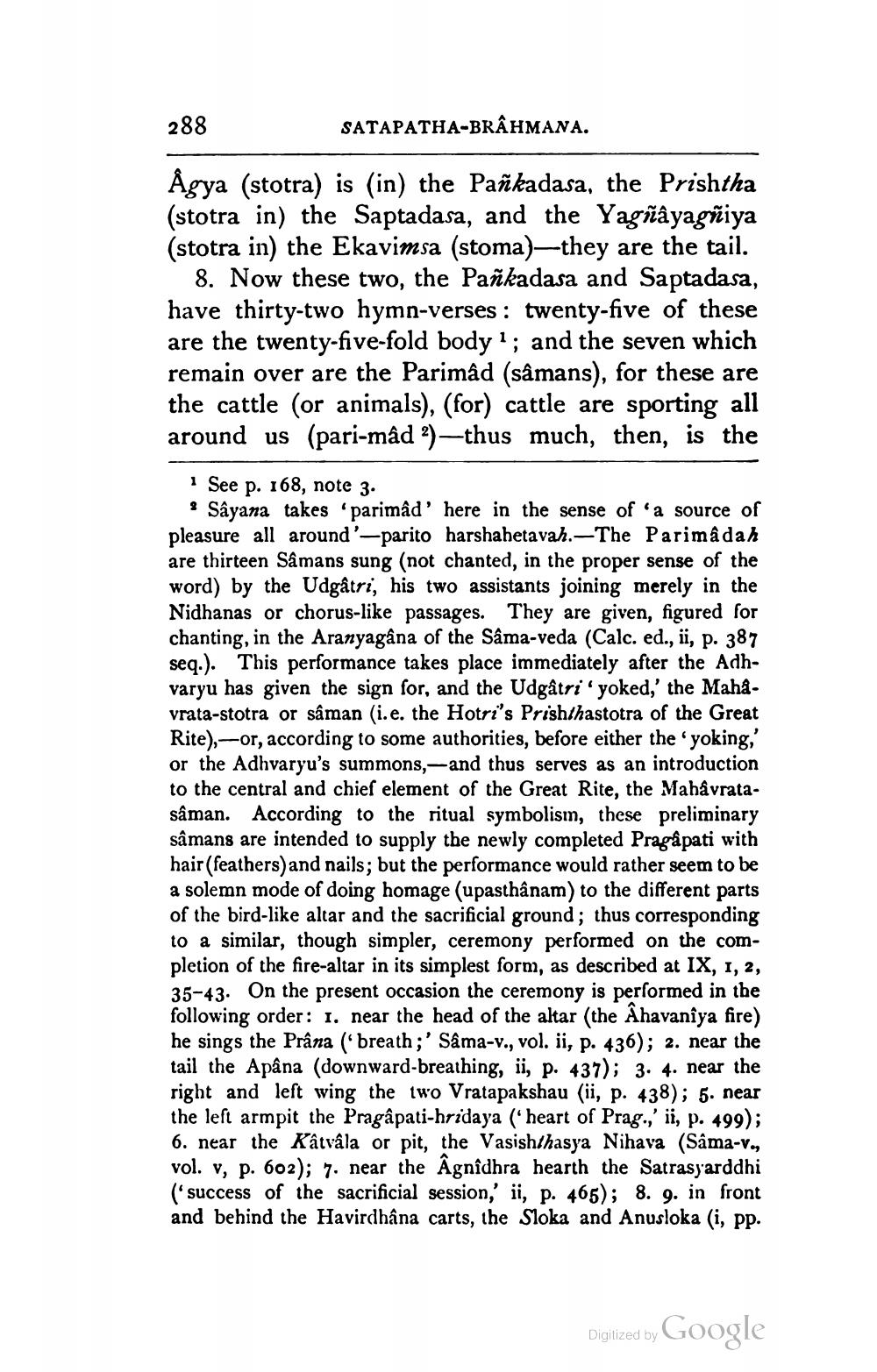________________
288
SATAPATHA-BRAHMANA.
Ågya (stotra) is (in) the Pañkadasa, the Prishtha (stotra in) the Saptadasa, and the Yagñâyagñiya (stotra in) the Ekavimsa (stoma)—they are the tail.
8. Now these two, the Pañkadasa and Saptadasa, have thirty-two hymn-verses : twenty-five of these are the twenty-five-fold body 1; and the seven which remain over are the Parimad (sâmans), for these are the cattle (or animals), (for) cattle are sporting all around us (pari-mâd 2)—thus much, then, is the
See p. 168, note 3. * Sâyana takes 'parimad' here in the sense of a source of pleasure all around'-parito harshahetavah. --The Parimadah are thirteen Samans sung (not chanted, in the proper sense of the word) by the Udgâtri, his two assistants joining merely in the Nidhanas or chorus-like passages. They are given, figured for chanting, in the Aranyagana of the Sama-veda (Calc. ed., ii, p. 387 seq.). This performance takes place immediately after the Adhvaryu has given the sign for, and the Udgâtri yoked,' the Mahavrata-stotra or saman (i.e. the Hotri's Prishthastotra of the Great Rite),or, according to some authorities, before either the 'yoking,' or the Adhvaryu's summons, and thus serves as an introduction to the central and chief element of the Great Rite, the Mahavratasaman. According to the ritual symbolism, these preliminary samans are intended to supply the newly completed Pragapati with hair (feathers) and nails; but the performance would rather seem to be a solemn mode of doing homage (upasthanam) to the different parts of the bird-like altar and the sacrificial ground; thus corresponding to a similar, though simpler, ceremony performed on the completion of the fire-altar in its simplest form, as described at IX, 1, 2, 35-43. On the present occasion the ceremony is performed in the following order: 1. near the head of the altar (the Ahavanîya fire) he sings the Prâna (breath; ' Sâma-v., vol. ii, p. 436); 2. near the tail the Apâna (downward-breathing, ii, p. 437); 3. 4. near the right and left wing the two Vratapakshau (ii, p. 438); 5. near the left armpit the Pragâpati-hridaya ('heart of Prag.,' ii, p. 499); 6. near the Kâtvala or pit, the Vasishthasya Nihava (Sâma-v., vol. v, p. 602); 7. near the Agnîdhra hearth the Satrasyarddhi (success of the sacrificial session,' ii, p. 465); 8. 9. in front and behind the Havirdhâna carts, the Sloka and Anusloka (i, pp.
Digitized by Google




